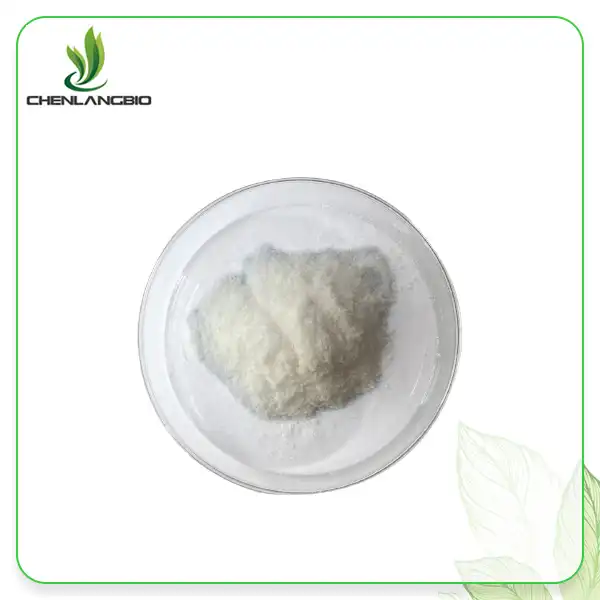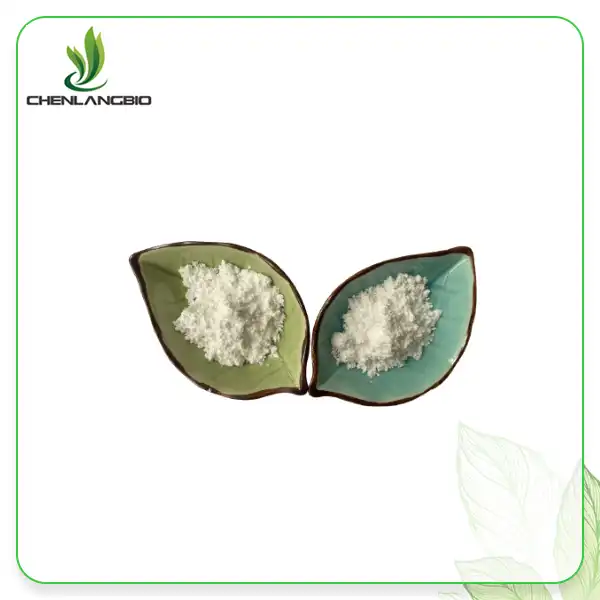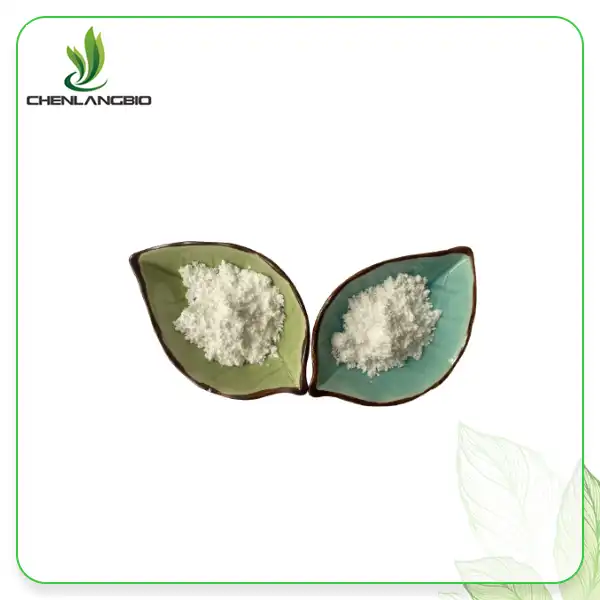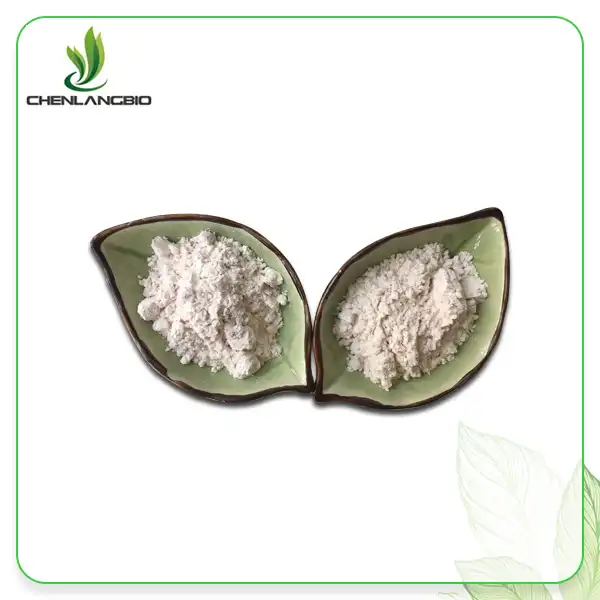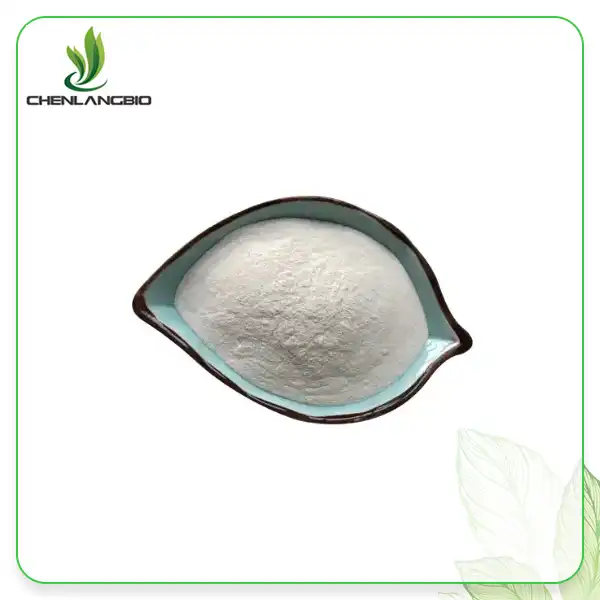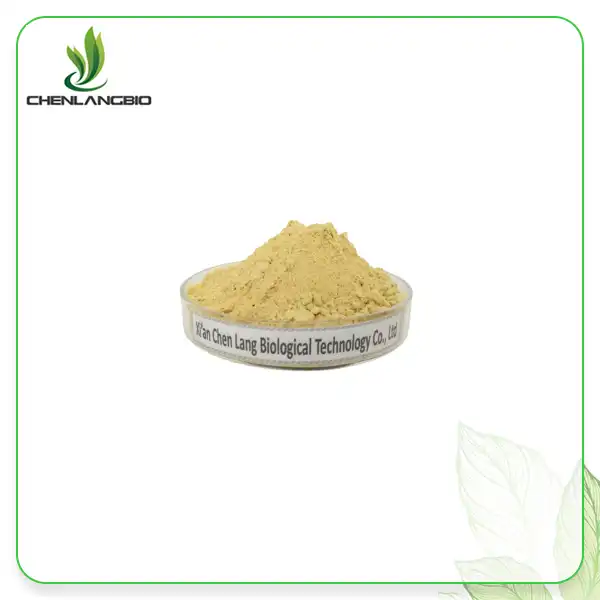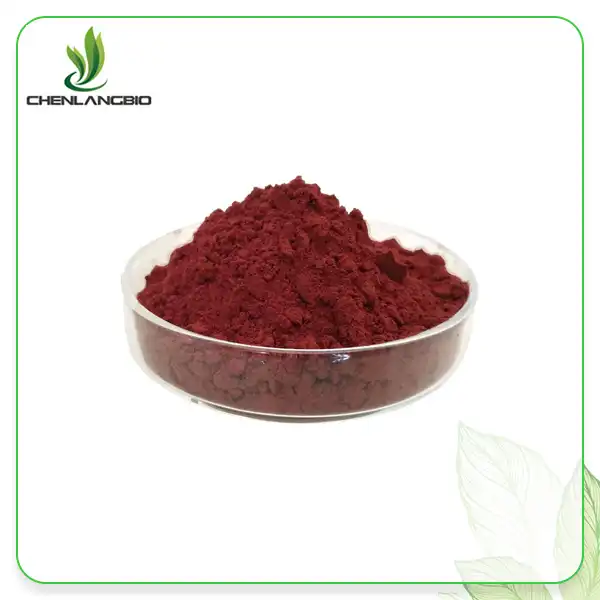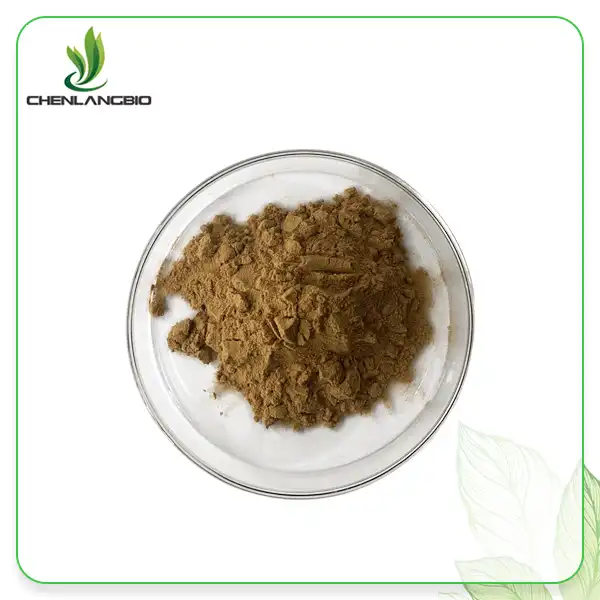What Role Does HPLC-Tested Milk Thistle Extract Play in Liver Detox Products?
2025-08-05 09:37:51
In the rapidly evolving landscape of natural health supplements, liver detoxification products have gained unprecedented attention for their potential to support optimal hepatic function. Among the botanical extracts that have demonstrated remarkable efficacy in this domain, milk thistle extract stands as a cornerstone ingredient, particularly when validated through High-Performance Liquid Chromatography (HPLC) testing protocols. This standardized testing methodology ensures the precise quantification of active compounds, primarily silymarin, which serves as the primary therapeutic constituent responsible for the extract's hepatoprotective properties. The integration of HPLC-tested Milk Thistle Extract into liver detox formulations represents a convergence of traditional herbal wisdom and modern analytical precision, offering consumers scientifically validated products that can effectively support liver health, enhance detoxification pathways, and promote overall metabolic wellness.
The Science Behind HPLC-Validated Milk Thistle Extract
Standardization Through Advanced Analytical Methods
The utilization of High-Performance Liquid Chromatography in testing Milk Thistle Extract represents a paradigm shift in botanical quality assurance, establishing unprecedented standards for consistency and therapeutic reliability. HPLC methodology enables precise identification and quantification of silymarin compounds, including silybin, silydianin, and silychristin, which collectively constitute the extract's bioactive profile. This analytical approach ensures that each batch of Milk Thistle Extract contains standardized concentrations of these crucial compounds, typically standardized to 80% silymarin content, thereby guaranteeing consistent therapeutic outcomes across different production cycles. The sophisticated instrumentation employed in HPLC testing can detect even trace amounts of active constituents, providing manufacturers and consumers with confidence in product potency and purity. Furthermore, this analytical precision enables the detection of potential adulterants or contaminants that might compromise the extract's therapeutic efficacy, ensuring that only the highest quality Milk Thistle Extract reaches the consumer market.
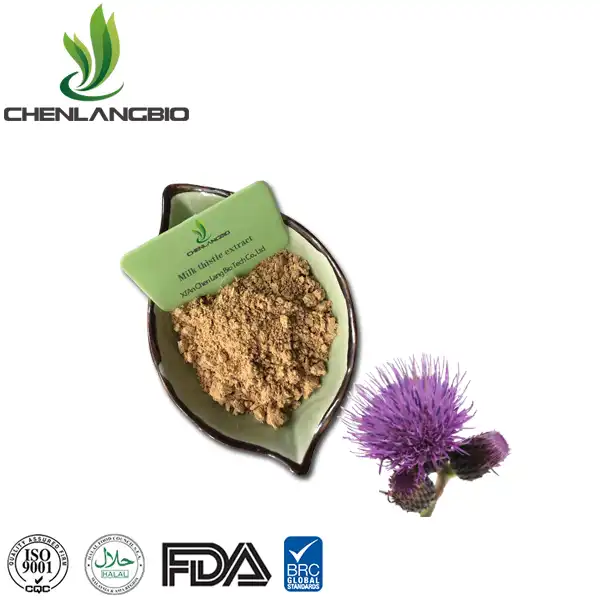
Bioactive Compound Identification and Quantification
The comprehensive analysis of Milk Thistle Extract through HPLC reveals a complex phytochemical matrix dominated by flavonolignans, with silymarin representing the most clinically significant component group. Advanced chromatographic separation techniques allow for the individual identification of silybin A and silybin B, which together constitute approximately 60-70% of the total silymarin content in premium Milk Thistle Extract preparations. These compounds exhibit distinct pharmacokinetic profiles and therapeutic mechanisms, with silybin demonstrating superior bioavailability and hepatoprotective activity compared to other silymarin constituents. The precise quantification of these individual compounds through HPLC testing enables formulators to optimize dosage recommendations and predict therapeutic outcomes with greater accuracy. Additionally, the identification of secondary metabolites such as quercetin, kaempferol, and apigenin provides insights into the synergistic effects that enhance the overall therapeutic potential of milk thistle extract in liver detoxification applications.
Quality Control and Purity Assessment
The implementation of HPLC testing protocols for Milk Thistle Extract extends beyond simple potency verification to encompass comprehensive quality control measures that ensure product safety and efficacy. Advanced detection systems can identify potential contaminants, including heavy metals, pesticide residues, and microbial contaminants that might compromise the extract's therapeutic value or pose safety risks to consumers. The chromatographic fingerprinting capabilities of HPLC enable the detection of botanical adulterants or synthetic compounds that might be inadvertently or intentionally introduced during processing. This level of analytical scrutiny ensures that Milk Thistle Extract products meet or exceed international quality standards, including those established by the United States Pharmacopeia (USP) and European Pharmacopoeia (EP). The documentation of these analytical results provides manufacturers with the necessary data to support product claims and regulatory compliance, while offering consumers transparent information about product quality and purity.
Therapeutic Mechanisms in Liver Detoxification
Hepatoprotective Properties and Cellular Regeneration
The hepatoprotective mechanisms of Milk Thistle Extract operate through multiple pathways that collectively support liver health and enhance the organ's natural detoxification capabilities. The primary active compound, silymarin, demonstrates remarkable ability to stabilize hepatocyte membranes, preventing the entry of toxic substances while simultaneously promoting cellular repair and regeneration processes. Research indicates that Milk Thistle Extract stimulates protein synthesis within hepatocytes, facilitating the replacement of damaged cellular components and supporting the liver's remarkable regenerative capacity. The extract's ability to modulate inflammatory responses within hepatic tissue contributes to reduced oxidative stress and improved cellular function, particularly in individuals exposed to environmental toxins or those with compromised liver function. Additionally, Milk Thistle Extract has been shown to enhance the activity of glutathione peroxidase and superoxide dismutase, crucial antioxidant enzymes that protect hepatocytes from free radical damage and support the liver's natural detoxification processes.
Enhancement of Phase I and Phase II Detoxification Pathways
The complex detoxification processes within the liver involve two primary phases, both of which are significantly enhanced by the bioactive compounds found in Milk Thistle Extract. Phase I detoxification, mediated by cytochrome P450 enzymes, involves the initial modification of toxins to prepare them for elimination, and milk thistle extract has been demonstrated to optimize these enzymatic processes without causing unwanted induction that might lead to increased toxin formation. More importantly, the extract significantly enhances Phase II detoxification pathways, including glucuronidation, sulfation, and glutathione conjugation, which are crucial for the safe elimination of toxins from the body. The silymarin compounds in Milk Thistle Extract increase the availability of glutathione, the liver's primary antioxidant and detoxification cofactor, by stimulating its synthesis and regeneration. This enhanced glutathione availability is particularly important for individuals with compromised liver function or those exposed to high levels of environmental toxins, as it provides the necessary biochemical resources for effective detoxification.
Antioxidant and Anti-inflammatory Effects
The potent antioxidant properties of Milk Thistle Extract play a crucial role in protecting hepatic tissue from oxidative damage while supporting the liver's natural detoxification functions. The silymarin compounds demonstrate exceptional free radical scavenging activity, neutralizing reactive oxygen species that can damage cellular membranes and compromise hepatocyte function. This antioxidant activity is particularly important during the detoxification process, as the metabolism of toxins often generates additional free radicals that can overwhelm the liver's natural antioxidant defenses. Milk Thistle Extract also exhibits significant anti-inflammatory properties, modulating the production of pro-inflammatory cytokines and reducing hepatic inflammation that can impair detoxification processes. The extract's ability to inhibit nuclear factor-kappa B (NF-κB) activation provides additional protection against inflammatory damage while supporting the resolution of existing inflammation. These combined antioxidant and anti-inflammatory effects create an optimal environment for efficient liver detoxification while protecting hepatic tissue from the potential damage associated with toxin metabolism.
Clinical Applications and Market Integration
Formulation Strategies for Liver Detox Products
The integration of HPLC-tested Milk Thistle Extract into liver detoxification formulations requires sophisticated understanding of bioavailability enhancement and synergistic ingredient interactions. Modern formulation strategies often incorporate phospholipid complexes or liposomal delivery systems to improve the absorption of silymarin compounds, addressing the inherent bioavailability challenges associated with Milk Thistle Extract. The standardization achieved through HPLC testing enables formulators to precisely calculate dosage requirements and predict therapeutic outcomes, typically utilizing extracts standardized to 80% silymarin content for optimal efficacy. Synergistic combinations with other hepatoprotective botanicals, such as dandelion root, artichoke leaf, and turmeric, can enhance the overall therapeutic potential of Milk Thistle Extract while providing comprehensive liver support. The incorporation of additional nutrients, including N-acetylcysteine, alpha-lipoic acid, and selenium, further supports the liver's detoxification pathways and complements the therapeutic effects of milk thistle extract. These sophisticated formulation approaches ensure that consumers receive maximum therapeutic benefit from Milk Thistle Extract while minimizing potential side effects and optimizing overall product efficacy.
Consumer Education and Product Positioning
The successful marketing of liver detoxification products containing Milk Thistle Extract requires comprehensive consumer education about the extract's mechanisms of action and therapeutic benefits. Educational initiatives should emphasize the importance of HPLC testing in ensuring product quality and consistency, helping consumers understand the value proposition of standardized Milk Thistle Extract products. Clear communication about the extract's evidence-based benefits, including hepatoprotection, detoxification support, and antioxidant activity, enables consumers to make informed decisions about their liver health. Product positioning should highlight the traditional use of Milk Thistle Extract in supporting liver health while emphasizing the modern scientific validation provided through clinical research and analytical testing. The growing consumer awareness of environmental toxin exposure and the need for liver support creates significant market opportunities for high-quality Milk Thistle Extract products that can demonstrate superior quality through HPLC testing and standardization.
Regulatory Considerations and Quality Standards
The regulatory landscape surrounding Milk Thistle Extract products requires adherence to stringent quality standards and documentation requirements that are facilitated by HPLC testing protocols. Regulatory agencies increasingly require detailed analytical data to support product claims and ensure consumer safety, making HPLC testing an essential component of product development and commercialization. The standardization achieved through HPLC analysis enables manufacturers to meet Good Manufacturing Practice (GMP) requirements while providing the necessary documentation for regulatory compliance. International quality standards, including those established by the World Health Organization (WHO) and International Council for Harmonisation (ICH), emphasize the importance of analytical validation and standardization in botanical extracts. The comprehensive analytical data generated through HPLC testing of Milk Thistle Extract supports product registration in multiple international markets while ensuring compliance with evolving regulatory requirements. This regulatory alignment is crucial for market access and consumer confidence, particularly in regions with strict quality standards for dietary supplements and natural health products.
Conclusion
The integration of HPLC-tested milk thistle extract into liver detoxification products represents a significant advancement in natural health supplementation, combining traditional herbal wisdom with modern analytical precision. This standardized approach ensures consistent therapeutic outcomes while providing consumers with scientifically validated products that effectively support liver health and detoxification pathways. The comprehensive quality control measures enabled by HPLC testing guarantee product purity and potency, establishing Milk Thistle Extract as a cornerstone ingredient in premium liver detox formulations that meet the highest standards of efficacy and safety.
Ready to experience the superior quality of premium Milk Thistle Extract for your liver detox product formulations?
Partner with CHENLANGBIO, your trusted Milk Thistle Extract factory and Milk Thistle Extract supplier, offering HPLC-validated products that meet the highest international standards. As a leading Milk Thistle Extract manufacturer, we provide comprehensive solutions for companies seeking Milk Thistle Extract wholesale opportunities with guaranteed quality and consistency. Our state-of-the-art facilities produce over 600 tons annually, ensuring reliable supply chains for your business needs. With certifications including ISO 9001-2015, ISO 22000, and HALAL, we guarantee products that exceed industry expectations. Our dedicated R&D team and advanced HPLC testing capabilities ensure every batch meets stringent quality standards. Contact us today at admin@chenlangbio.com to discover how our premium Milk Thistle Extract can elevate your liver detox products to new heights of therapeutic excellence.
References
1. Abenavoli, L., Capasso, R., Milic, N., & Capasso, F. (2010). Milk thistle in liver diseases: past, present, future. Phytotherapy Research, 24(10), 1423-1432.
2. Polyak, S. J., Morishima, C., Lohmann, V., Pal, S., Lee, D. Y., Liu, Y., ... & Oberlies, N. H. (2007). Identification of hepatoprotective flavonolignans from silymarin. Proceedings of the National Academy of Sciences, 104(20), 8542-8547.
3. Kren, V., & Walterova, D. (2005). Silybin and silymarin–new effects and applications. Biomedical Papers, 149(1), 29-41.
4. Wellington, K., & Jarvis, B. (2001). Silymarin: a review of its clinical properties in the management of hepatic disorders. BioDrugs, 15(7), 465-489.
Send Inquiry
Related Industry Knowledge
- Is Cactus Extract Powder Safe During Pregnancy?
- What are the Benefits of Phellinus Linteus?
- Who Should Avoid Hops
- Witch Hazel Leaf Extract: Nature’s Solution for Acne
- Does Bakuchiol Fade Dark Spots
- What Is The Ingredient Isoleucine
- How Much Mangiferin Is In A Mango
- Are Lutein and Zeaxanthin the Same Thing
- What is Kola Nut Extract Powder Used For
- Does Green Coffee Bean Extract Powder Affect Sleep


